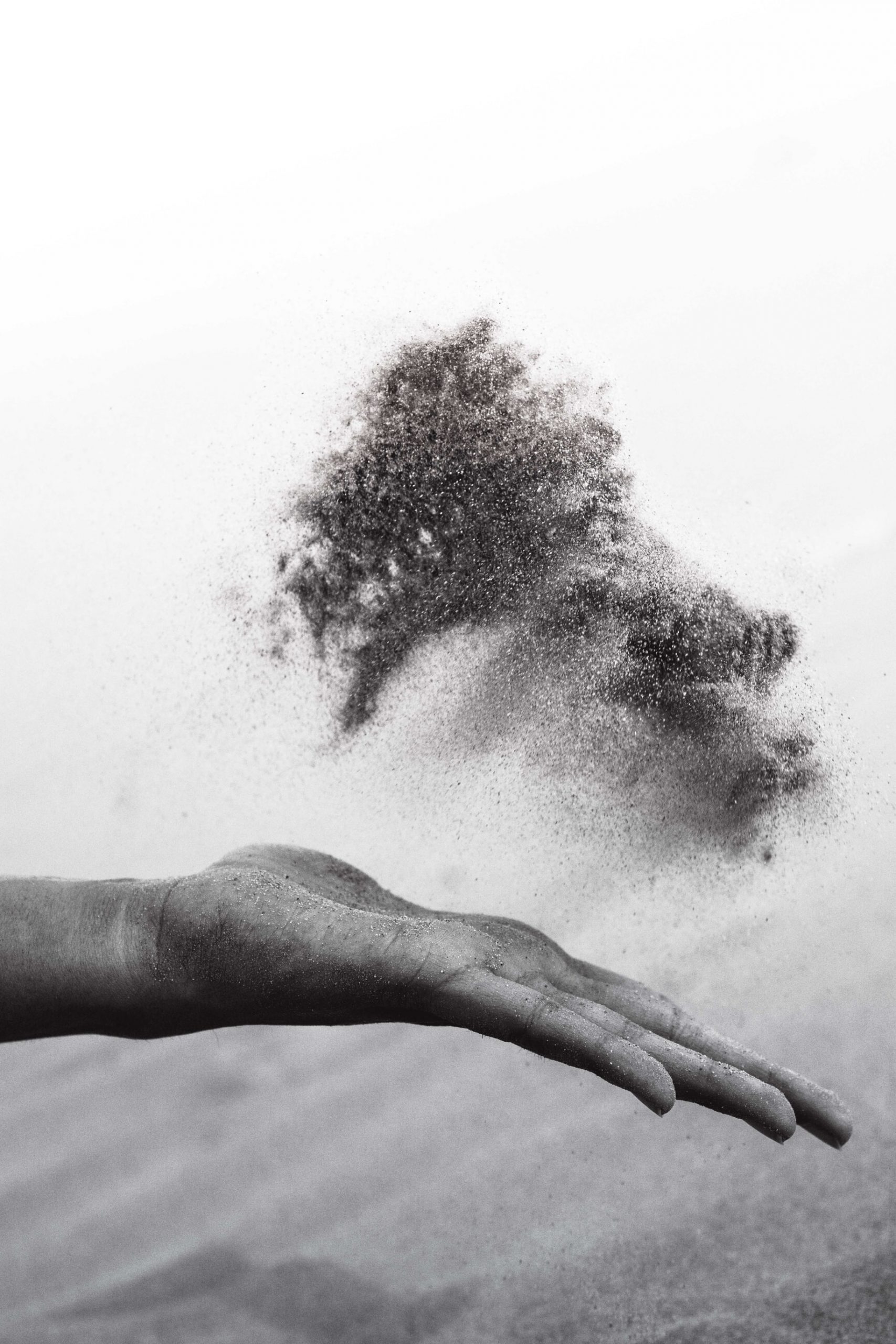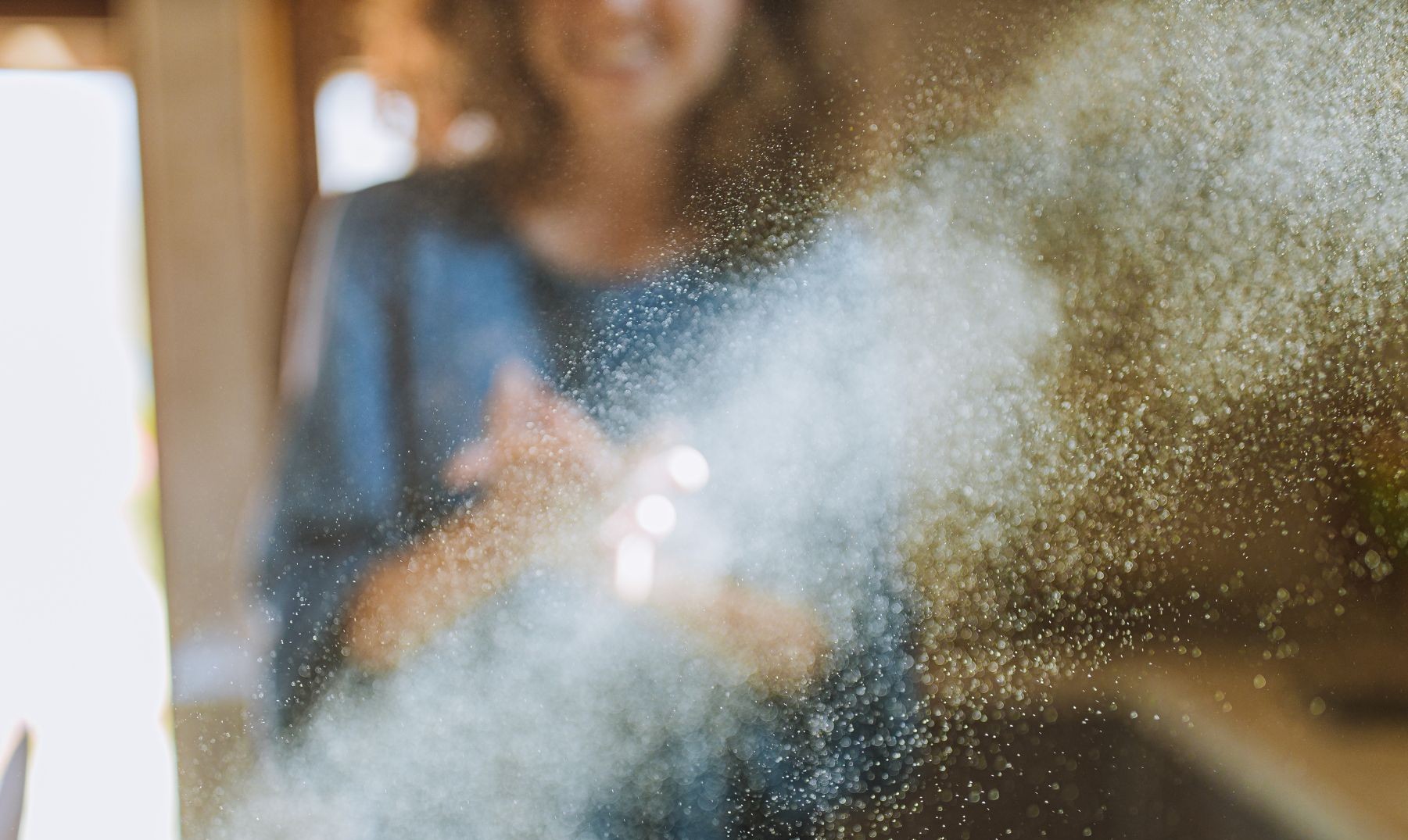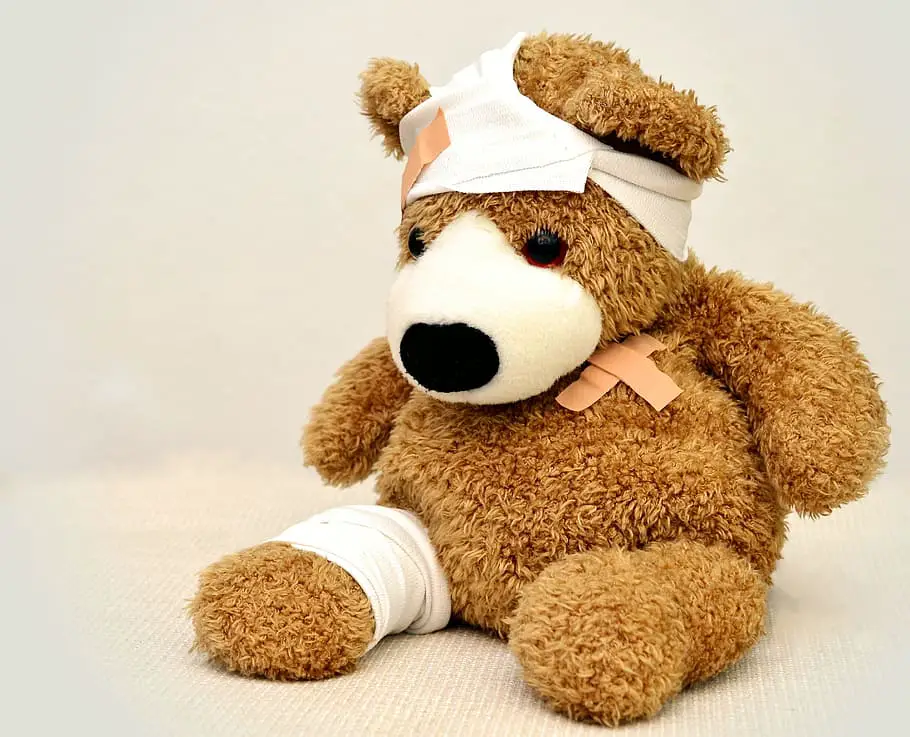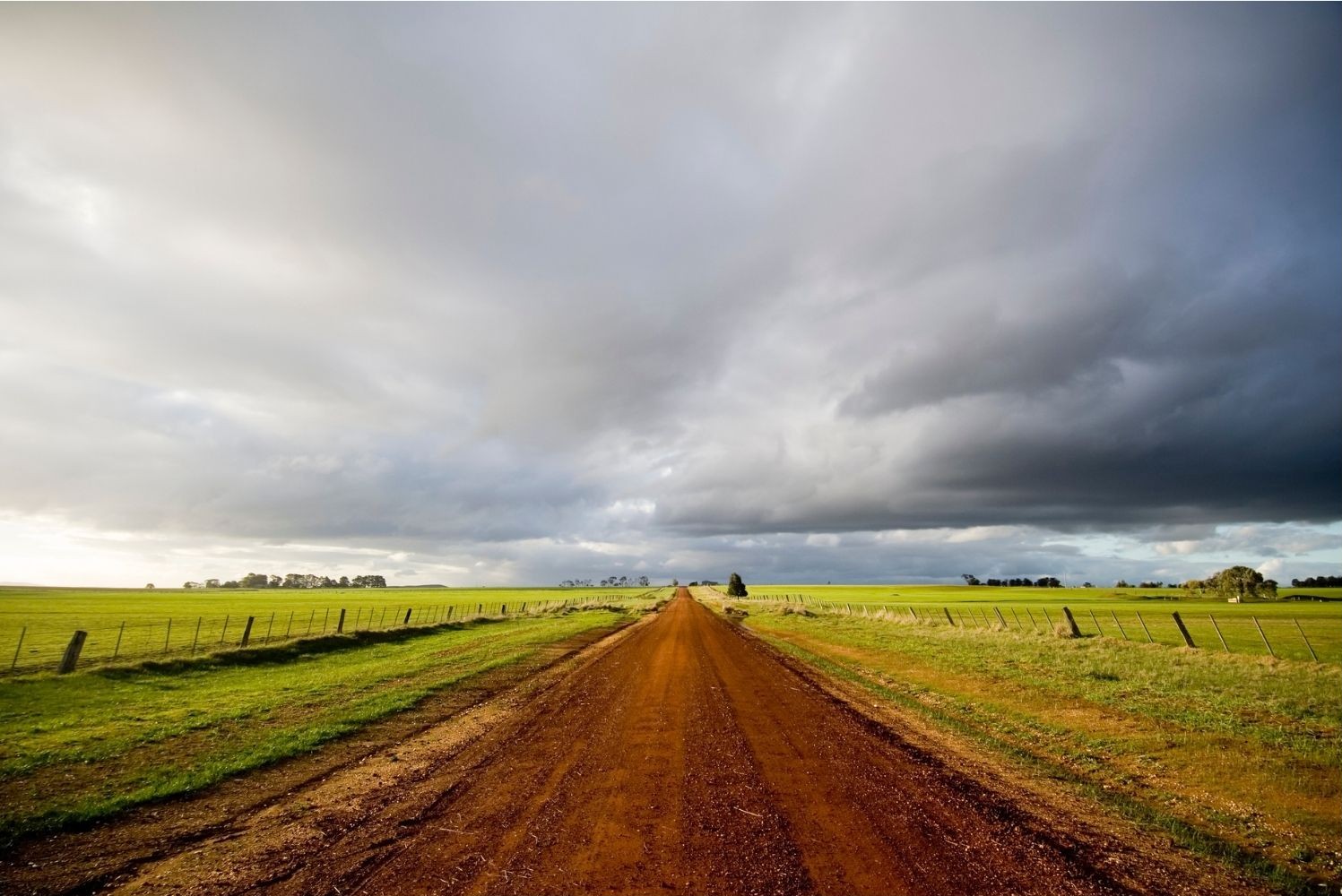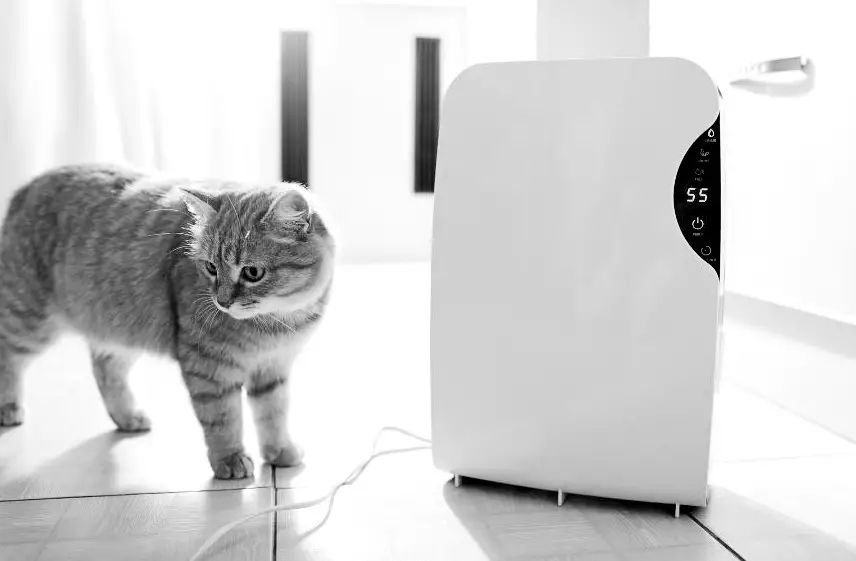Dust is a particularly nasty recipe of ingredients when you get down to it.
Everything from insect skeletons, rodent feces, dead skin flakes, mites, and not to mention pollen and spores.
All floating through the air, ready to come in contact with your eyes, nose and mouth,
And create havoc in your sinuses.
So what can you do?
Table of Contents
How to get rid of dust in the air?
Here is a list of suggestions that we have compiled to help you do just that.
1. Use a humidifier
Low humidity or dry air as it’s more commonly referred to, can play a huge part in how much dust is floating and how far it can travel through the air.
The reason is that humidity has a “mudding” effect that weighs down dust and causes it to fall out of the air that you breathe.
The result of keeping a higher relative humidity when it comes to dusty surfaces is similar in that it congeals dust particles and keeps them from being kicked into the air.
A Humidifier is a device that adds moisture back into the air when the relative humidity has dropped.
It’s the first thing on our list because if the climate is extra dry then there is little chance of controlling dust in the air until you do something to balance the relative humidity.
2. Air purifier
Filtering is another way of getting dust out of the air.
Most air purifiers use HEPA filters that are able to remove dust particles as small as .003 parts per million.
HEPA Air purifiers work best in small spaces. HIPAA air purifiers are usually combined with carbon filters that are able to adsorb gases and odors as well.
Other air purifiers called Ionizer air purifiers use ions to connect dust particles together through polarity.
The result is that they become too heavy to float and fall out of the air.
The main disadvantage for ionizers for removing dust from the air is though it falls out of the air it collects on the surface. Which will undoubtedly be kicked up again.
Another disadvantage with them is that they smell a bit like ozone.
3. Vacuuming
Most dust is brought into the house with your feet. Tracking dust in your shoes is easily one of the biggest ways that it collects in your house.
Walking is all it takes to kick the dust that you brought in with your shoes in the first place up into the air.
Vacuuming the carpet more often is a way of reducing dust in the air.
 4. Sweeping and mopping
4. Sweeping and mopping
Along the same lines as vacuuming, dirty floors supply dust that is easily kicked up into the air when walking over them.
Sweeping and mopping more frequently is another way of keeping dust from becoming a problem in your airstream.
5. Take your shoes off at the door
Just like we mentioned a couple of paragraphs ago, dust coming in on the bottom of your shoes is one of the biggest ways that dirt gets into your home.
Kicking your shoes off before you walk through the house is a great way of keeping the dust from traveling in on your shoes.
Another option is to change shoes, when you come in the door to a pair that doesn’t go outside with you.
6. Dusting and wiping
If your countertops, shelves and tables are dusty, then you have another supply of dust that can easily make it into your ambient air simply by turning on a ceiling fan or letting a breeze in.
Keeping dust out of the air is as easy as keeping your surfaces wiped down sometimes.
7. Shut the doors and windows
Keeping the doors and windows open is inviting dust to come into the house and float through your air.
As a source for dust, there’s not much bigger of a reservoir than the dust blowing in from outside.
7. Seal up Windows and doors
Leaving the doors and windows open intentionally is not the only way the dust comes in through your doors and windows.
When your windows and doors are not sealed properly, then dust can gather around the unsealed areas of your home and become part of the dustiness of your air.
Sealing up your doors and windows will help keep dust from coming when they are closed.
 8. Keep the dogs and cats outside
8. Keep the dogs and cats outside
If you have pets that could come in and out of the house, you are going to have a lot of dust.
Not only are dogs running around in the yard collecting dirt, they are shedding, and spreading dander throughout your air stream.
Cat hair is particularly covered in bacteria and dander as well.
Without keeping the animals outside, there’s no real chance of keeping dust out of the house and the air.
9. Plant some grass
If you have ground in your yard that doesn’t have any grass on it or is overgrown with weeds, then you have a big supply of dust waiting to be blown into the house.
Planting some grass seed on your bare ground areas and keeping the yard trimmed will help lessen the supply of dust available to get into your home.
10. HVAC filters
The filters in your central heat and air conditioning help filter out dust so that it does not circulate through your house via the vent work of your HVAC system.
Keeping the filters replaced helps them filter more dust and allergens from your air when the unit is on.
It also keeps your unit working much more efficiently.
11. Change your bedding more often
It’s a disgusting fact that your mattress and sheets can be covered with dead skin and dust mites.
The longer you let your bedding go without proper washing, the more dust you’re going to have coming off of your own bed.
Also many of the allergies that you assume are entering into your airways through the dustiness of your air,
might just be hanging out on your pillow and in your blankets waiting for you to bury your face in them.
 12. House plants
12. House plants
If you haven’t heard about it, there’s a big list of houseplants that nasa say are all natural air purifiers.
Some house plants like the rubber plant actually draw dust to themselves and have to be washed off.
Other plants like Aloe Vera and snake plants create oxygen which naturally makes your air easier to breathe.
House plants are a novel and excellent way of creating less dust in your air.
If you want to see NASA’s big list, and pick some plants that you know will do the job, you can click here.
13. Dehumidifier / Air conditioner
The humidifier was at the top of our list to help deal with dust in the air when the relative humidity is low.
But dustiness can be an issue when the humidity is high as well.
One of the big issues with excessive humidity is that it becomes a source of nutrition for dust mites.
Dust mite populations explode in high humidity.
Another problem with high humidity is that it supplies moisture for mold to take root. Once you have mold growing in your house, then you have mold spores traveling through your air.
A dehumidifier is a device that works the opposite of a humidifier.
Instead of adding humidity, it reduces the humidity in the air. Thereby reducing mold spores and dust mites.
Refrigerated air conditioners like window air conditioners and central heat and air (HVAC) dehumidify the air as they cool also.
Post air conditioners have a dehumidifier setting called “dry mode” on them.
If the temperatures are very hot with high humidity, running the air conditioner is a way to reduce dust in your air.
If the humidity is very high but the temperatures are not so much,
A dehumidifier or using the dry mode on your air conditioner is the way to go.
 We hope you liked our Dusty list.
We hope you liked our Dusty list.
We hope you’ll get some relief from the dust floating through your air by applying some of these suggestions.




 8. Keep the dogs and cats outside
8. Keep the dogs and cats outside 12. House plants
12. House plants We hope you liked our Dusty list.
We hope you liked our Dusty list.